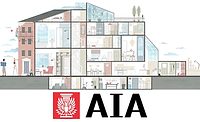By 2035, more than one in five people in the U.S. will be aged 65 and older and one in three households will be headed by someone in that age group, according to a report released by the Harvard Joint Center for Housing Studies. This growth, the report notes, will increase the demand for affordable, accessible housing that is well connected to services beyond what current supply can meet.
According to the report, Projections and Implications for Housing a Growing Population: Older Adults 2015-2035, as the baby boom generation ages, the U.S. population aged 65 and over is expected to grow from 48 million to 79 million, and the number of households headed by someone over 65 will increase by 66%, to nearly 50 million. This growth will increase the demand for housing units with universal design elements such as zero-step entrances, single-floor living, and wide halls and doorways. However, only 3.5% of homes offer all three of these features.
“The housing implications of this surge in the older adult population are many and call for innovative approaches to respond to growing need for housing that is affordable, accessible and linked to supportive services that will grow exponentially over the next two decades,” said Chris Herbert, managing director of the Harvard Joint Center for Housing Studies.
In the coming years, many older adults will have the financial means to pay for appropriate housing and supportive services that allow them to live longer in their own homes. However, many others will face financial hardships, particularly because their incomes will decline in retirement. Low-income renters are particularly vulnerable, notes the report, which projects that nearly 6.4 million low-income renters will be paying more than 30% of their income for housing by 2035.
The report notes that in many surveys, older adults express a strong desire to live at home for as long as possible. Achieving that goal will require public and private action to support modifications to existing homes, take steps to address the affordability challenges facing both owners and renters, and adapting the health care system to enhance service delivery in the home. There is also a need to expand the range of housing options available to better meet the needs of an aging population and improve options for older adults to remain in their community when their current home is no longer suitable.
For more information, visit jchs.harvard.edu/housing-a-growing-population-older-adults.
America’s Aging Population Increases Building Demand

Looking for a reprint of this article?
From high-res PDFs to custom plaques, order your copy today!





